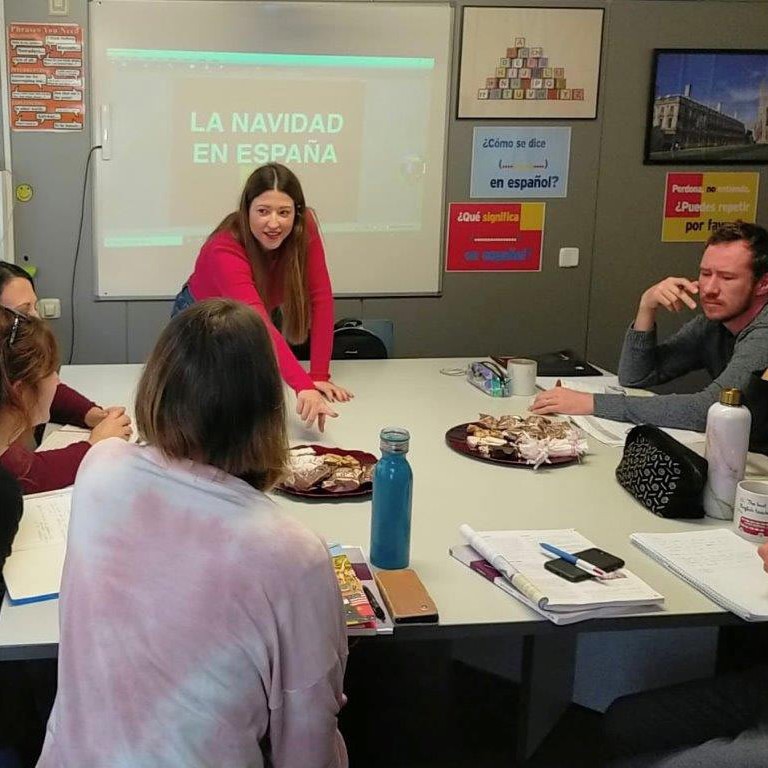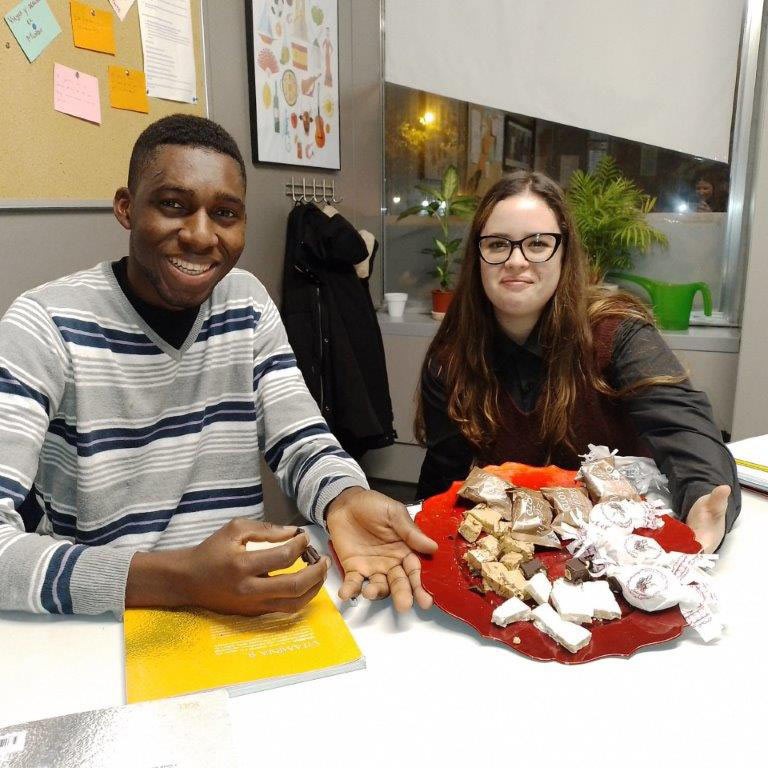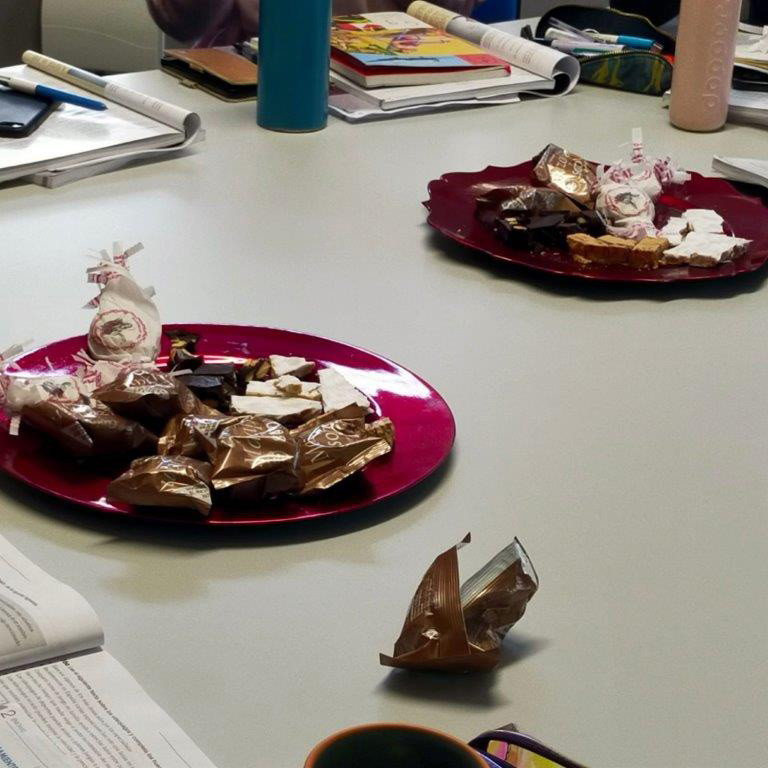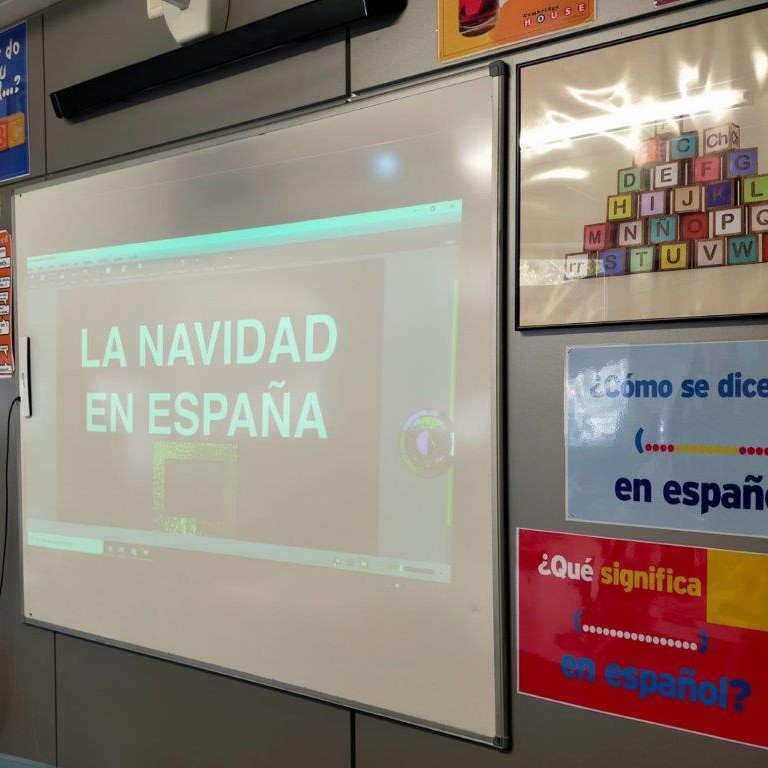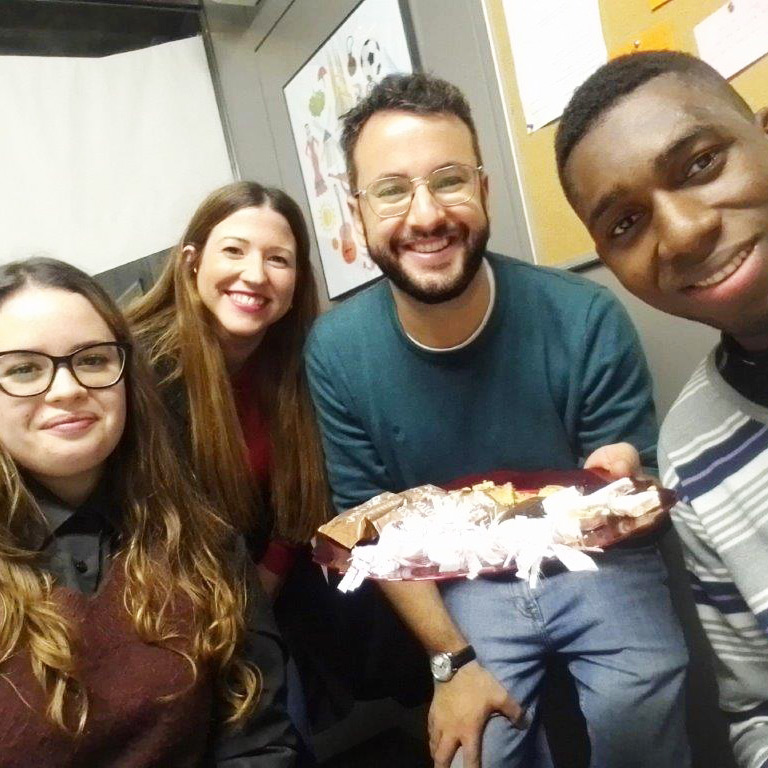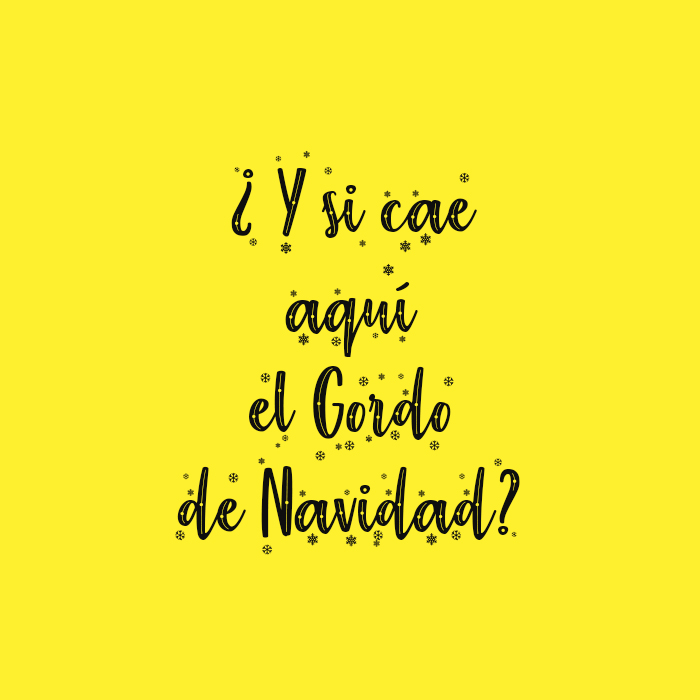¡Feliz Año Nuevo! - Happy New Year!
This is a custom heading element.
Here at Hablamos, we love taking part in the traditional New Year festivities here in Madrid, so we thought we’d tell you a little bit about them, and some of those from other countries in el mundo hispano (the Spanish-speaking world)
Los propósitos de Año Nuevo
Before we talk about all the partying, let’s take a moment to focus on how we can become better people in 2023. OK, that’s a slight exaggeration, but it is the idea behind los propósitos de año nuevo (New Year’s Resolutions). In a lot of the world, el año nuevo (New Year) is a time when nos prometemos (we promise ourselves) that we’ll change something about our lives and start to make some little improvements. A good one, if you’re going to come here to study Spanish, would be to say that you’ll take one of our online or face-to-face Spanish courses! We’ll look at some other common resolutions in another blog too!
Spain
On the night of Nochevieja (New Year’s Eve), the Spanish like to celebrate with their families by having yet another huge cena (dinner) often consisting of pescado y mariscos (fish and seafood) or sometimes cordero lechal (lamb) or pato (duck). This varies between different regions, with the north opting more for seafood and the south more meat-based.
After dinner, it’s party time! The Spanish tend to go out for New Year more than people in other countries given the tendency towards a more outdoor social life. In Madrid, where Hablamos is based, people fill the central Puerta del Sol and gather around to see and listen to the campanadas (chimes) at medianoche (midnight) which ring out from the Casa de Correos (the building housing the Presidency of the Comunidad de Madrid). This event is broadcast live on national television too, and has been a tradition in the capital since el siglo XIX (the 19th century).
While you’re here learning Spanish, you’ll also need to tomar las doce uvas (eat the 12 grapes) at midnight on Nochevieja (New Year’s Eve). For each of the 12 campanadas (chimes) of midnight, Spaniards eat 1 grape. It doesn’t sound too difficult, but imagine trying to finish each one before having to eat the next! There are even special packs of grapes you can buy which are sin pipas (seedless) and sometimes even peladas (peeled). If you’ve never done this tradition before, we’d definitely recommend getting these ones as it takes some practice to get good at eating 12 proper grapes in such a short space of time! The origin of the idea of eating 12 grapes has various theories, although most suggest that it started being a thing in the late 19th or early 20th century. Since then, it has also spread to other parts of el mundo hispano (the Spanish-speaking world).
Mexico
Apart from grape eating, the Mexican people have some of their own tradiciones (traditions) when it comes to el Año Nuevo (New Year). In some parts of the country, people queman una muñeca (burn a doll) to say goodbye to the previous year, while others rompen una vajilla de barro (break a clay pot) to then start using a new one for the new year. Curious, right?
Peru
Peruvians have a long tradition of big parties to celebrate the New Year, while wearing prendas íntimas de color amarillo (yellow underwear) to mark the occasion. Lots of people also take part in una cábala (a ritual) to bring good luck. For instance, in certain parts of the country people go for a walk around la manzana (the block) with una maleta vacía (an empty suitcase) so they can have the opportunity to go travelling. Other people echan arroz bajo el marco de la puerta de la casa (throw rice under the doorframe of the main door to their house) to see if they can get married soon!
Colombia
In Colombia, putting una espiga de trigo (an ear of wheat) on the table during the cena de nochevieja (New Year’s Eve dinner) is done to bring good luck for the coming year. Colombia also shares the tradition of burning dolls which are made of ropa vieja, guasca de plátano y pólvora (old clothes, banana skin and gunpowder). This explosive mix is then set alight just outside (thankfully!) the front door of their homes while everyone se abraza (hugs each other) and wishes for happiness in the New Year.
Obviously, that’s just a few of the different traditions for New Year in the Spanish-speaking world. When you’re learning Spanish, you should always find out more about the culture of the countries whose language you’re learning, and these universal celebrations are a great way to do that. So from us here at Hablamos, os deseamos un feliz y próspero año nuevo (we wish you a happy and prosperous New Year) and we hope to see you soon to help you on your Spanish learning journey. ¡Feliz 2023!
Hablamos - full-on Spanish!
¡Feliz Año Nuevo!
This is a custom heading element.
En Hablamos nos encanta participar en las tradicionales fiestas de fin de año aquí en Madrid, así que hemos pensado en contarte un poco sobre ellas, y algunas de las de otros países del mundo hispano.
Los propósitos de Año Nuevo
Antes de hablar de la fiesta, vamos a centrarnos en cómo podemos ser mejores personas en 2023. Vale, es una pequeña exageración, pero es la idea que hay detrás de los propósitos de año nuevo. En gran parte del mundo, Año Nuevo es una época en la que nos prometemos que vamos a cambiar algo de nuestras vidas y empezamos a hacer algunas pequeñas mejoras. Una buena, si vas a venir aquí a estudiar español, sería decir que harás uno de nuestros cursos de español online o presencial. También veremos otros propósitos comunes en otro blog.
España
En la noche de Nochevieja, a los españoles les gusta celebrar con sus familias otra gran cena que suele consistir en pescado y mariscos o, a veces, cordero lechal o pato. Esto varía según las regiones, ya que en el norte se opta por el marisco y en el sur por la carne.
Después de la cena, ¡es la hora de la fiesta! Los españoles suelen salir por Año Nuevo más que la gente de otros países, dada la tendencia a una vida social más al aire libre. En Madrid, donde tiene su sede Hablamos, la gente llena la céntrica Puerta del Sol y se reúne para ver y escuchar las campanadas de medianoche que suenan desde la Casa de Correos (edificio de la Presidencia de la Comunidad de Madrid). Este acontecimiento se retransmite también en directo por la televisión nacional, y es una tradición en la capital desde el siglo XIX.
Mientras estés aquí aprendiendo español, también tendrás que tomar las doce uvas a medianoche en Nochevieja. Por cada una de las 12 campanadas de la medianoche, los españoles comen una uva. No parece muy difícil, pero ¡imagina que intentas terminar cada una antes de tener que comer la siguiente! Incluso hay paquetes especiales de uvas que se pueden comprar sin pipos y a veces incluso peladas. Si nunca has realizado esta tradición, te recomendamos que compres un paquete de estas últimas, ya que se necesita algo de práctica para conseguir comer 12 uvas de verdad en un espacio de tiempo tan corto. Sobre el origen de esta tradición hay distintas teorías, aunque la mayoría sugiere que comenzó a finales del siglo XIX o principios del XX. Algunos dicen que fue un exceso de producción de uva, pero no está confirmado. Desde entonces, también se ha extendido a otras partes del mundo hispano.
México
Además de comer uvas, el pueblo mexicano tiene algunas tradiciones propias cuando llega el Año Nuevo. En algunas partes del país, la gente quema una muñeca para despedir el año anterior, mientras que otros rompen una vajilla de barro para empezar a usar una nueva con el nuevo año. Curioso, ¿verdad?
Perú
Los peruanos tienen una larga tradición de grandes fiestas para celebrar el Año Nuevo, llevando prendas íntimas de color amarillo para marcar la ocasión. Mucha gente también participa en una cábala para atraer la buena suerte. Por ejemplo, en algunas partes del país se da un paseo por la manzana con una maleta vacía para tener la oportunidad de viajar. Otras personas echan arroz bajo el marco de la puerta de la casa para ver si pueden casarse pronto.
Colombia
En Colombia, poner una espiga de trigo en la mesa durante la cena de Nochevieja se hace para atraer la buena suerte para el año venidero. Colombia también comparte la tradición de quemar muñecos hechos con ropa vieja, guasca de plátano y pólvora. Esta mezcla explosiva se prende fuego justo en la puerta de sus casas mientras todos se abrazan y desean felicidad para el nuevo año.
Obviamente, éstas son sólo algunas de las diferentes tradiciones de Año Nuevo en el mundo hispanohablante. Cuando se aprende español, siempre hay que conocer mejor la cultura de los países cuya lengua se está aprendiendo, y estas celebraciones universales son una buena manera de hacerlo. Así que desde Hablamos, os deseamos un feliz y próspero año nuevo y esperamos veros pronto para ayudaros en vuestro viaje de aprendizaje del español. ¡Feliz 2023!
Hablamos - full-on Spanish!
A very Spanish Christmas
This is a custom heading element.
The Christmas period here runs from el 24 de diciembre (24th December) to el 6 de enero (6th January). That’s a whole two weeks so let’s look at which fechas (dates) are the most important and why.
.
¡Feliz Navidad!
First of all, you probably want to know how to say “Merry Christmas” in Spanish. We say Feliz Navidad and is more akin to Happy Christmas, really. This greeting is, like its counterparts in other languages, found everywhere at this time of year and you might see the variation Felices Fiestas (Happy Holidays) too. At the end of November or beginning of December, you need to get putting up your árbol de navidad (Christmas tree) complete with all its adornos (decorations), and your belén (Nativity scene) to be ready for the party to come!
Christmas Eve – The meal you’ve been waiting for!
In a traditional Spanish Christmas, the most important meal for everyone takes place on Nochebuena (Christmas Eve). Everyone goes to see their family and the main festivities normally start around 9pm when people decide to cenar (have dinner) to celebrate the start of the Christmas holidays. Traditional food on Nochebuena can vary between the different regions in Spain, but here in Madrid you might find consomé (broth) and lombarda (red cabbage) which would accompany things like cordero lechal (lamb) or mariscos (seafood) or pescado (fish). El postre (dessert) at this time of year would consist of turrón (nougat – but this can be a type of chocolate bar too), plovorones (a type of lard based biscuit) and mazapán (marzipan).
While eating this late feast, many people watch el discurso del Rey (the King’s speech) which is broadcast at 9pm, and then many go to la Misa del Gallo (midnight mass) at their local church to celebrate the birth of Jesus on el día de Navidad (Christmas Day).
Christmas Day – Recovery time
Unlike in many countries, el día de Navidad (Christmas Day) is not when people get their presents. There is, traditionally, no Papa Noel (Santa Claus) in a Spanish Christmas – probably because he’s so busy visiting all the other countries in the world he just can’t get to Spain. I can’t possibly think of any other reason! Some people do now get the big red man to pay a visit and leave a few things, but it’s not the most common thing for people to do. Anyway, on Christmas Day families tend to just relax and chill out, many times eating las sobras (the leftovers) from the huge meal the night before.
El día de los inocentes - April Fools’ Day in December
El 28 de diciembre (28th December) is the Día de los Santos Inocentes (Day of the Holy Innocents) is when Catholics mark the matanza de los niños (the massacre of the children) by King Herod as he was looking to get rid of the recently born baby Jesus. Such a sad event sounds very sombre, but to lighten the mood, this is the day when Spaniards gastan bromas (play tricks) on each other. This also commemorates the tricks that were played on Herod to ensure he didn’t return to try and kill more children!
El Día de los Reyes Magos – Presents on the 6th of January
By far the most anticipated day in a Spanish Christmas is actually the last one! El 6 de enero (6th January) is when children (and adults!) all over the country open their regalos (presents) which were left for them the night before by los Reyes Magos (the Three Wise Men/Kings). On the night of 5th January, los Reyes Magos (Melchor, Gaspar y Baltasar) visit everyone’s houses to leave the regalos (presents) but not until they’ve celebrated la cabalgata de los Reyes Magos (the Three Kings Parade) with colourful carrozas (floats) through city centres all over Spain. It’s also the day to enjoy el roscón de Reyes (Three Kings Cake) and try to find the hidden figurita (little figure – often one of the three wise men) and avoid the unlucky haba (bean). We’ll tell you more about this special day closer to the time!
And so, the 6th January marks the end of las fiestas de Navidad (Christmas holidays). By now, everyone is demasiado lleno (too full) with all that Christmas food and drink and so need to ir al gimnasio (go to the gym) to work it all off ready for next December! When you come to Spain to learn Spanish, we definitely recommend ensuring you’re here to see all the amazing things that happen at this time of year. And to help you talk about it all, here’s some useful vocab.
| Spanish | English |
| El árbol de navidad | Christmas tree |
| Las luces de navidad | Christmas lights |
| Un regalo | A present |
| Un adorno | A decoration |
| Un belén | Nativity scene |
| Nochebuena | Christmas Eve |
| El día de Navidad | Christmas Day |
| El día de los Santos Inocentes | Day of the Holy Innocents (aka April Fools Day) |
| Nochevieja | New Year’s Eve |
| Año Nuevo | New Year |
| El día de los Reyes Magos | Three Kings Day / Three Wise Men Day |
| Papá Noel | Santa Claus |
| Celebrar | To celebrate |
So all that’s left for us to do is say ¡Feliz navidad a todos! – we hope you all have a fantastic Christmas, wherever you are, and hope to see some of you here on one of our Spanish courses in Madrid or online in the near future!
Hablamos - full-on Spanish!
Una Navidad muy española
This is a custom heading element.
El periodo navideño aquí va desde el 24 de diciembre hasta el 6 de enero. Son dos semanas enteras, así que veamos qué fechas son las más importantes y por qué.
¡Feliz Navidad!
Este saludo, al igual que sus homólogos en otros idiomas, se encuentra en todas partes en esta época del año y es posible que también veas la variación Felices Fiestas. A finales de noviembre o principios de diciembre, hay que empezar a colocar el árbol de Navidad con todos sus adornos y el belén para que esté listo para la fiesta.
Nochebuena - ¡La cena que estabas esperando!
En una Navidad tradicional española, la comida más importante para todos tiene lugar en la Nochebuena. Todo el mundo se reúne con su familia y la fiesta principal suele empezar sobre las 21:00 horas, cuando la gente decide cenar para celebrar el inicio de las fiestas navideñas. La comida tradicional de la Nochebuena puede variar entre las diferentes regiones de España, pero aquí en Madrid se pueden encontrar el consomé y la lombarda que acompañan a platos como el cordero lechal, los mariscos o el pescado (besugo, principalmente). El postre, en esta época del año, consistiría en turrón (duro o blando, o de chocolate), polvorones y mazapán de Toledo.
Mientras se cena, mucha gente ve el discurso del Rey que se emite a las 21:00 horas, y luego algunos van a la Misa del Gallo en su iglesia local para celebrar el nacimiento de Jesús en el día de Navidad.
Día de Navidad: tiempo de recuperación
A diferencia de muchos países, el día de Navidad no es cuando la gente recibe sus regalos. Tradicionalmente no hay Papá Noel en la Navidad española, probablemente porque está tan ocupado visitando todos los países del mundo que no puede venir a España. ¡No se me ocurre ninguna otra razón! Ahora, algunas personas hacen que el gran hombre rojo haga una visita y deje algunas cosas, pero no es lo más habitual. En cualquier caso, el día de Navidad las familias tienden a relajarse, muchas veces comiendo las sobras de la gran comida de la noche anterior.
El día de los inocentes - Día de los Inocentes en diciembre
El 28 de diciembre es el Día de los Santos Inocentes, fecha en la que los católicos conmemoran la matanza de los niños que llevó a cabo el rey Herodes para deshacerse del recién nacido Jesús. Un acontecimiento tan triste suena muy sombrío, pero para aligerar el ambiente, es el día en que los españoles gastan bromas. Esto también conmemora los trucos que se le hicieron a Herodes para asegurarse de que no volviera a intentar matar a más niños.
El Día de los Reyes Magos – Regalos del 6 de enero
El día más esperado de la Navidad española es, con diferencia, el último. El 6 de enero es el día en el que los niños (y los adultos) de todo el país abren los regalos que les dejaron la noche anterior los Reyes Magos. La noche del 5 de enero, los Reyes Magos (Melchor, Gaspar y Baltasar) visitan las casas de todos para dejar los regalos, pero no sin antes celebrar la cabalgata de los Reyes Magos con coloridas carrozas por el centro de las ciudades de toda España. También es el día para disfrutar del roscón de Reyes y tratar de encontrar la figurita escondida (a menudo uno de los tres Reyes Magos) y evitar el haba de la mala suerte. Te contaremos más sobre este día tan especial cuando se acerque la fecha.
Y así, el 6 de enero terminan las fiestas de Navidad. A estas alturas, todo el mundo está demasiado lleno con toda la comida y la bebida de Navidad y necesita ir al gimnasio para trabajar todo para el próximo diciembre. Cuando vengas a España a aprender español, te recomendamos que te asegures de estar aquí para ver todas las cosas increíbles que ocurren en esta época del año.
Y ya solo nos queda decir ¡Feliz Navidad a todos! Deseamos que todos paséis una fantástica Navidad, estéis donde estéis, y esperamos veros a algunos de vosotros en uno de nuestros cursos de español en Madrid o en línea en un futuro próximo.
Hablamos - full-on Spanish!
The Fat Lottery
This is a custom heading element.
Who doesn’t love a bit of fat lottery? That’s what the Spanish call their Christmas lottery game – El gordo.
What is El gordo?
The El gordo lottery is drawn on the 22nd of December and is one of the most anticipated television events of the year. The sorteo (draw) is shown live on La 1 (Spanish national TV channel 1) and features two huge bombos (hoppers). One of these contains 100,000 balls with all the lottery numbers, while the other has balls with all the prizes printed on them. Then, the bombos start spinning and students from the Colegio de San Ildefonso in Madrid sacan (take out) the numbers which they then cantan (sing) out loud for all to hear. One student sings the lottery number and the other sings the prize awarded to that number.
How much does a décimo for the gordo costs?
In terms of types of tickets, you can buy a billete (ticket) which costs 200 euros, or more commonly un décimo (a tenth) costing, logically, 20 euros. Many people share un décimo with friends or family and so reducing the cost incrementally for each player. The numbers on each one are a combination of 5 digits between 00000 and 99999 which therefore produces 100,000 unique numbers (hence 100,000 balls in the lottery machine). Clearly, far more than this number of tickets are sold, so billetes (tickets) are produced in series (series) meaning multiple people end up with the winning numbers and therefore share the total amount.
Tickets for the El gordo lottery están a la venta (go on sale) from early July (yes, July!) and there’s always a frenzied rush of people willing to queue for hours to get theirs from the most popular puntos de venta (points of sale) across the country. For example, in Madrid the most famous lottery seller is Doña Manolita located right in the city centre. This administración (lottery seller) has people waiting outside for hours each day, week after week to buy their décimos as the shop has sold more winning numbers, both for el gordo (the main prize) and the other prize amounts, more times than anywhere else in Spain. When you’re here learning Spanish, you should get yourself down there early to pick up a ticket – who knows what might happen!
The prizes of the Christmas Lottery
The premios (prizes) for the El gordo are a little complicated. As we said in the previous paragraph, el gordo is actually the name for the top cash prize. Officially, the lottery is called El Sorteo Extraordinario de Navidad (The Spanish Christmas Lottery Draw) but everyone uses el gordo to mean the same thing. Here’s a quick breakdown of the main prizes.
| Spanish | English | Prize amount |
| El gordo – Primer premio | The fat one – First prize | €4,000,000 x 1 |
| Segundo premio | Second prize | €1,250,000 x 1 |
| Tercer premio | Third prize | €500,000 x 1 |
| Cuarto premio | Fourth prize | €250,000 x 2 |
| Quinto premio | Fifth prize | €60,000 x 8 |
| La pedrea | Minor prize | €1,000 x 1,794 (in 2022 at least) |
Apart from these, there are all sorts of other combinations of prizes too – you’ll just have to jugar (play) yourself and find out!
Where does El gordo come from?
The Christmas lottery in Spain, in its current form, is a tradition dating back to 1812 when the country was mostly under French rule after the Napoleonic invasion. The city of Cádiz, in the south of the country, was the one of the few places still free from the French and home to what remained of the independent Spanish government. A minister, Ciriaco González Carvajal, came up with the idea as a way to recaudar fondos (raise funds) for the government which was in desperate need of money to continue fighting the Guerra de la Independencia (the Independence War). The first sorteo (draw) took place on the 18th of December 1812 in Cádiz and, as the Spanish regained their freedom, was moved to the capital of Madrid in 1814.
Since its inception, the lotería de navidad has been drawn every single year during economic crises, disasters and even in the Guerra Civil (Civil War) of 1936-1939 when the two bandos (sides) had separate sorteos (draws). It’s incredible how important El gordo is in Spain, and everyone wants to see the new anuncio de la lotería de navidad (Christmas lottery advert) when it’s released in November as it marks the start of the run-up to Christmas.
So, get your wallet/purse ready for when you come to do your Spanish course in Madrid and buy a décimo or two – you might be one of the lucky winners!
Hablamos - full-on Spanish!
“El Gordo” de la lotería
This is a custom heading element.
¿Quién no quiere algo de lotería del “Gordo”? Así es como los españoles llaman al sorteo extraordinario de lotería de Navidad: el Gordo.
El sorteo del Gordo se celebra el 22 de diciembre y es uno de los acontecimientos televisivos más esperados del año. El sorteo se retransmite en directo por La 1 (de Televisión Española) y en él participan dos enormes bombos: en uno de ellos se introducen 100.000 bolas con todos los números de lotería; en el otro bombo están todos los premios que se otorgan en este sorteo. A continuación, los bombos comienzan a girar y los alumnos del Colegio de San Ildefonso de Madrid sacan los números que luego cantan en voz alta para que todos los oigan. Uno de los niños canta el número y el otro canta el premio.
¿Cuánto cuestan los décimos del Gordo?
En cuanto a la cantidad de dinero jugada, se puede comprar un billete que cuesta 200 euros, o más comúnmente un décimo que cuesta, lógicamente, 20 euros. Mucha gente comparte un décimo con amigos o familiares, e incluso se intercambia reduciendo así el coste (puedes jugar más números, aunque menos cantidad de cada uno). Los números de cada décimo son una combinación de 5 cifras entre 00000 y 99999, lo que produce 100.000 números únicos (de ahí las 100.000 bolas del bombo). Evidentemente, se vende mucho más que este número de billetes, por lo que los billetes se producen en series, lo que significa que varias personas acaban teniendo los números ganadores y, por lo tanto, comparten el importe total.
Los décimos de lotería del Gordo están a la venta desde principios de julio (¡sí, julio!) y siempre hay un frenesí de gente dispuesta a hacer cola durante horas para conseguir el suyo en los puntos de venta más populares de todo el país. En Madrid, por ejemplo, la lotera más famosa es Doña Manolita, situada en pleno centro de la ciudad. En esta administración hay gente esperando fuera durante horas todos los días, semana tras semana, para comprar sus décimos, ya que la tienda ha vendido más números premiados, tanto para el Gordo (el premio principal) como para el resto de cantidades premiadas, más veces que ningún otro lugar de España. Cuando estés aquí aprendiendo español, deberías ir temprano a comprar un décimo, ¡quién sabe lo que puede pasar!
Los premios de la Lotería de Navidad
Los premios del Gordo son un poco complicados. Como hemos dicho en el párrafo anterior, el Gordo es en realidad el nombre del premio mayor en metálico. Oficialmente, la lotería se llama Sorteo Extraordinario de Navidad, pero todo el mundo utiliza el Gordo para referirse al mismo. He aquí un rápido desglose de los principales premios.
| Spanish | Prize amount |
| El gordo – Primer premio | €4,000,000 x 1 |
| Segundo premio | €1,250,000 x 1 |
| Tercer premio | €500,000 x 1 |
| Cuarto premio | €250,000 x 2 |
| Quinto premio | €60,000 x 8 |
| La pedrea | €1,000 x 1,794 (in 2022 at least) |
Además, hay todo tipo de combinaciones de premios, ¡sólo tienes que jugar y descubrirlo!
¿De dónde procede el Gordo?
La lotería de Navidad en España, en su forma actual, es una tradición que se remonta a 1812, cuando el país estaba en su mayor parte bajo dominio francés tras la invasión napoleónica. La ciudad de Cádiz, en el sur del país, era una de las pocas libres de los franceses y sede de lo que quedaba del gobierno independiente español. A un ministro, Ciriaco González Carvajal, se le ocurrió la idea como una forma de recaudar fondos para el gobierno, que necesitaba desesperadamente dinero para seguir luchando en la Guerra de la Independencia. El primer sorteo tuvo lugar el 18 de diciembre de 1812 en Cádiz y, cuando los españoles expulsaron a los franceses, se trasladó a la capital, Madrid, en 1814.
Desde su creación, la lotería de Navidad se ha sorteado todos los años, durante crisis económicas, catástrofes e incluso en la Guerra Civil de 1936-1939, cuando los dos bandos tuvieron sorteos separados. Es increíble la importancia que tiene el Gordo en España, y todo el mundo quiere ver el nuevo anuncio de la lotería de Navidad cuando se estrena en noviembre, ya que marca el inicio de la campaña previa a la Navidad.
Así que prepara tu cartera/monedero para cuando vengas a hacer tu curso de español en Madrid y compra uno o dos décimos: ¡puedes ser uno de los afortunados ganadores!
Hablamos - full-on Spanish!
Listening to music in Spanish
This is a custom heading element.
Escuchar a música (listening to music) is one of life’s great pleasures. It’s a fantastic way to aprender la cultura (learn about the culture) of the different countries around the world, and also a fantastic way to help you to learn a language. You can divertírte (enjoy yourself) and mejorar tu oído (improve your listening skills) at the same time – so let’s have a look at some different musical styles from around the Spanish-speaking world, and end with some useful vocabulary.
El flamenco
Obviously, you must have heard of el flamenco as it’s the most typical style of music and dance that people associate with Spain. Originating in Andalucía, a region in the south of Spain, it is un símbolo (a symbol) of Spanish culture to the outside world, despite the fact that it is only from one particular area.
There are three main parts to el flamenco – el cante (the singing element), el toque (the guitar playing and percussion aspects) and el baile (the dance). Each of these elements are crucial in making the whole flamenco experience truly come to life. During the dance, the bailaor/a (flamenco dancer) can be seen playing unas castañuelas (castanets) – a typical Spanish percussion instrument held in the hands and clicked together to make a very distinctive sound. Many bailaores/as (flamenco dancers) are estrellas (stars) in their own right, and we’d definitely recommend you go to un tablao (a flamenco venue) in Madrid when you’re here studying Spanish to see a full show. It’s an amazing spectacle and you’ll definitely leave feeling energised and wanting to see more!
El reguetón
You might have seen this type of music written as “reggaeton”, and that spelling also gives you a bit more of a clue as to its origins. Developed in Puerto Rico in the early 1990s, el reguetón is related to the world of reggae and hip-hop, as well as the more underground dancehall style.
This style is all about rapped lyrics, danceable tunes and a more club feeling than other types of music we’re talking about in this article. It’s proven to be extremely popular with young people throughout the Spanish-speaking world and you’ll hear it absolutely everywhere when you’re living in Madrid learning Spanish. An early pioneer of the género (genre) was Daddy Yankee, who you might well have heard of, and more recent stars include Bad Bunny and Karol G.
La bachata
You might not have heard of this one, but la bachata is a very popular style in Latin America which came from the República Dominicana (Dominican Republic) and extended throughout the Spanish-speaking world. It’s full of ritmo (rhythm) and life, and it also has its own set of dance moves. These are performed with una pareja (a partner) and the resulting dance is a sensual one – so perfect for if you’re on the lookout for a romantic evening!
La bachata uses all sorts of instruments, from guitarras (guitars) to el bongo (bongo drums) and saxofones (saxophones) which combine together to create its unique sound. Recently, la bachata was declared as Patrimonio de la Humanidad (Intangible culture of Humanity) by UNESCO. When you’re here in Madrid, there are plenty of clubs where you can hear this amazing style so make sure you take advantage of the opportunity!
La salsa
Another typical musical genre which we’re sure you’ve heard of, la salsa is actually a fusion of Cuban and American dances which first became popular in New York in the late 1960s. There, immigrants from various Latin American countries developed the first salsa tracks, along with the typical dance routines which accompany this type of music. Nowadays, there are a variety of different styles, from New York, to Colombian, Puerto Rican and the original Cuban.
Interestingly, the name la salsa is also the Spanish word for sauce, which quite accurately describes the mixture of cultures present in the music and dance moves of this genre. Like la bachata, the moves in la salsa are all about moving your cadera (hips) and hombros (shoulders) with lots of giros (spins) mixed in for good measure. There are lots of places in all Spanish-speaking countries where you can try out this dance style, and many clubs in Madrid have salsa evenings so you can learn the moves, practise your Spanish and have a great night too!
And there you have four typical music and dance styles from the Spanish-speaking world. So you can understand some of the language used when talking about music, here’s some useful vocabulary to help you.
Géneros musicales – Music genres
| Spanish | English |
| El flamenco | Flamenco |
| El reguetón | Reggaeton |
| La bachata | Bachata |
| La salsa | Salsa |
| El tango | Tango |
| El rock | Rock |
| La música pop | Pop |
| El jazz | Jazz |
| El hip-hop | Hip-hop |
| La música clásica | Classical music |
| La música country | Country music |
| La ópera | Opera |
| La música electrónica | Electronic music |
Instrumentos musicales – Musical instruments
| Spanish | English |
| El piano | Piano |
| La guitarra | Guitar |
| La batería | Drums |
| La trompeta | Trumpet |
| El saxofón | Saxophone |
| El violín | Violin |
| La flauta | Flute |
| El clarinete | Clarinet |
| El arpa | Harp |
| El órgano | Organ |
| Las castañuelas | Castanets |
| Los instrumentos de cuerda | String instruments |
| Los instrumentos de viento | Wind instruments |
| Los instrumentos de percusión | Percussion instruments |
Otro vocabulario – Other vocabulary
| Spanish | English |
| La letra | Lyrics |
| La canción | Song |
| El/La cantante | Singer |
| El bailaor/La bailaora | Flamenco dancer |
| El concierto | Concert |
| El músico | Musician |
| Cantar | To sing |
| Bailar | To dance |
| Oir | To hear |
| Escuchar | To listen |
Hablamos - full-on Spanish!
El Puente de Diciembre
This is a custom heading element.
Los festivos de España se publican cada mes de octubre para que todo el mundo sepa qué fechas debe marcar en el calendario como días libres durante el siguiente año. Por ley, puede haber hasta catorce días festivos oficiales, incluyendo los días nacionales y regionales. El gobierno central decide nueve de ellos, que son siempre los mismos, y los gobiernos regionales y los ayuntamientos pueden añadir hasta cinco más para completarlos.
Casi todo el mundo en el país espera con impaciencia dos fechas en particular: el 6 y el 8 de diciembre. ¿Por qué? Porque son dos días festivos que permiten disfrutar de ambos días libres en la misma semana, y que para mucha gente suponen también un puente. ¿Pero qué es eso? Pues bien, un puente significa que dos días de vacaciones están separados por un día laborable entre ellos, de modo que puedes tomarte ese día libre de trabajo y hacer una escapada de tres (o más) días. Desgraciadamente, no todo el mundo se beneficia de ello y algunas personas tienen que trabajar el día 7, aunque a todo el mundo le gustan los dos días libres. Veamos por qué estas fechas son importantes en el calendario festivo español.
El 6 de diciembre – Día de la Constitución
Como sabrás, o no, entre 1939 y 1975 España fue gobernada por el dictador Francisco Franco. A su muerte, hubo un periodo conocido como la Transición que duró, más o menos, hasta 1978, cuando la nueva constitución democrática fue sometida a referéndum y aprobada por el pueblo español el 6 de diciembre. Cada año, este importante hito se celebra con un festivo nacional, ya que esta constitución sigue vigente hasta hoy.
Durante el día de la Constitución se celebran numerosos actos en todo el país. Por ejemplo, en Madrid los soldados izarán la bandera en la Plaza de Colón al son del himno nacional y con la presencia de varios políticos de alto nivel. Además, en las calles del barrio de Barajas se celebra una carrera que rinde homenaje a la Constitución y que constituye un interesante evento local en sí mismo. En esta época del año, la ciudad también se prepara para la Navidad, por lo que en los días cercanos al 6 se organizan muchas actividades navideñas, como los mercados navideños que se celebran por toda la capital. Sin duda, un día para celebrar, ya que todos recordamos cómo volvió la democracia a España.
El 8 de diciembre – Día de la Inmaculada Concepción
La otra fecha importante de esta semana es el día 8, en el que se celebra la Inmaculada Concepción de la virgen María, madre de Jesús. Para los cristianos, es un día excepcionalmente importante, ya que se celebra que María, desde el momento en que fue concebida por sus padres, por gracia y privilegios únicos que Dios le concedió, fue preservada de toda mancha del pecado original.
Mucha gente acude a la misa para celebrar el día, y es, según la tradición eclesiástica, la única ocasión en que el sacerdote puede llevar vestimenta azul. Para las personas no religiosas, es simplemente otro día de fiesta y una oportunidad para descansar y relajarse, o simplemente salir y disfrutar de algunas de las atracciones cercanas al lugar donde viven.
Cuando vengas a Madrid a aprender español, todas estas fiestas serán una gran oportunidad para salir y sumergirte en la cultura española. Siempre hay algo destacable en cada fiesta especial y puedes aprender mucho sobre la historia, la gente y las tradiciones del país acudiendo a los diferentes eventos. Si haces un curso en Hablamos, verás que organizamos muchas actividades culturales, así que anímate a unirte a nosotros y comienza tus estudios de español hoy mismo.
Hablamos - full-on Spanish!
Puente de Diciembre
This is a custom heading element.
Spain’s festivos (public holidays) are published every October to let everyone know which dates to mark on the calendar as a day off during the next year. By law, there can be up to 14 official holidays including both national and regional days. The central government decides on 9 of these, which are always the same, and the regional governments and local councils can add up to 5 more to make up the full amount.
Pretty much everyone in the country looks forward to two dates in particular – the 6<th and the 8th of December. Why? Because they’re two festivos (bank/public holidays) which mean you get both days off work in the same week, and for a lot of people also make un puente. But what’s that? Well, un puente (a bridge) means when two holiday days are separated by a normal day between them so that you can take an extra day off work in the middle and make a three (or more!) day break. Unfortunately, not everybody benefits from this and some people have to work on the 7th, even still, everyone likes two days off! Let’s have a look as to why these dates are important in the Spanish holiday calendar.
El 6 de diciembre – Día de la constitución
As you may, or may not, know, from 1939-1975 Spain was ruled by the dictador (dictator) Francisco Franco. When he died, there was a period known as la transición (the transition) which lasted, more or less, until 1978 when the new democratic constitución (constitution) was put to a referendum and approved by the Spanish people on the 6th of December. Each year, this important hito (event) is marked with a festivo nacional (national holiday) as this constitution is still in force to this day.
During el día de la constitución (Constitution Day) there are numerous events which take place around the country. For instance, in Madrid soldiers izar la bandera (raise the flag) in the Plaza de Colón (Columbus Square) to the sound of the himno nacional (national anthem) and with the presence of various high-level politicians. Also, in the Barajas neighbourhood there’s a carrera (race) through the streets which pays homage to the Constitution and makes for an interesting local event in itself. The city tends to be getting ready for la navidad (Christmas) at this time of year too, so lots of Christmassy activities get going on the days around the 6th such as the mercados navideños (Christmas markets) all around the capital. Definitely a day to celebrate as we all remember how democracy returned to Spain.
El 8 de diciembre – Día de la inmaculada concepción
The other important fecha (date) during this week is the 8th, on which we celebrate the Immaculate Conception of la virgen María, madre de Jesús (The Virgin Mary, mother of Jesus). For cristianos (Christians), this is an exceptionally important day as it is when Santa Ana (Saint Anne), the mother of María (Mary), fell pregnant and God preserved Mary from the stain of original sin. As such, María (Mary) is free from pecado (sin) and could then go on to give birth to Jesus.
On this day, many people go to misa (mass) to mark the day, and it is, according to Church tradition, the only day on which the cura (priest) may wear vestimento azul (blue robes). For non-religious people, the day is simply another holiday and a chance to rest and relax, or just get out and enjoy some of the attractions around where they live.
When you come to Madrid to learn Spanish, all of these festivos are a great opportunity to go out and immerse yourself in Spanish culture. There’s always something happening on every special holiday and you can learn so much about the history, the people and the traditions of the country by going to the different events. If you take a course at Hablamos, we arrange lots of cultural activities so come and join us and start you Spanish studies with us today!
Hablamos - full-on Spanish!
Los Museos Municipales de Madrid
This is a custom heading element.
Con el curso de español para extranjeros de Hablamos y las actividades culturales celebradas cada viernes conocerás a fondo Madrid, lugares de interés populares y desconocidos. Las actividades culturales de Hablamos se desarrollan al aire libre, en museos, bares, en salas de exposiciones de la ciudad, excursiones cercanas…
En esta ocasión te queremos presentar una oferta cultural alternativa y desconocida: un recorrido por los tres museos municipales que tiene Madrid, que cuentan la historia de Madrid a través de la colección artística que albergan.
El Museo de San Isidro o Museo de los Orígenes
l primero es el Museo de San Isidro, situado en el barrio de La Latina, también conocido como el Museo de los Orígenes, es ideal para conocer la historia de Madrid desde sus orígenes más remotos en la Prehistoria hasta el establecimiento de la Corte en Madrid. El Valle del Manzanares, donde está ubicada la ciudad, fue ocupado por el hombre desde el Paleolítico Inferior. La colección de piezas arqueológicas de este museo nos permite conocer aspectos de época romana y visigoda, así como la evolución de la ciudad desde la primitiva medina musulmana del siglo IX hasta el reinado de Felipe II.
El barrio de La Latina es de los más viejos y atractivos de Madrid. Sus calles conservan el trazado que ya tuvieron hace siglos. Algunos de sus nombres (puerta de Moros, plaza de la Cebada, calle de la Morería, la propia Latina) nos trasladan a un tiempo en que esta zona era el verdadero centro de la vida en la ciudad. El nombre del barrio se debe a doña Beatriz Galindo, humanista y dama de confianza de la reina Isabel I de Castilla, la conocida como la Reina Católica de España. A Beatriz Galindo la llamaban la Latina por ser maestra de latín de la reina y sus hijas. A ella se debe la fundación del hospital de la Latina en el solar donde hoy se encuentra el Teatro La Latina.
Museo de Historia de Madrid
El segundo museo es la continuación histórica del primero. Se trata del Museo de Historia de Madrid. El museo está instalado en el antiguo Hospicio de Madrid, edificio construido por Pedro de Ribera, es una obra maestra del Barroco español. Con la colección artística que muestra este museo se explica la evolución de la ciudad desde su transformación en Corte de la monarquía española en 1561 hasta convertirse en una ciudad moderna, industriosa y cosmopolita en las primeras décadas del siglo XX. Además, el museo cuenta con la obra de Goya “Alegoría de Madrid” y una de las maquetas más importantes de Europa: “Modelo de Madrid. 1830”, de un incalculable valor documental por su detalle y precisión. El Museo de Historia de Madrid está situado en Malasaña, en la calle Fuencarral 78.
El barrio madrileño de Malasaña se ha convertido en uno de los puntos neurálgicos de la ciudad. Paseando entre sus calles seguro que encontrarás un plan gracias a su variada propuesta tanto de gastronomía, como de originales tiendas y de bares de copas que fueron claves en la época de la Movida Madrileña de los 80 y lo siguen siendo hoy en día en el ocio nocturno de Madrid.
Museo de Arte Contemporáneo de Madrid
El tercer museo municipal es el Museo de Arte Contemporáneo de Madrid, situado en el Centro de Cultura Contemporánea Conde Duque. El MACM posee un amplio catálogo de obras de diferentes movimientos: desde las vanguardias históricas hasta las corrientes contemporáneas de los Esquizos y La Movida madrileña. El peso que en este espacio artístico tiene la figura del escritor Ramón Gómez de la Serna, nos permite acercarnos al gran cambio que se produjo en España del siglo XIX al XX y a conocer mejor aspectos concretos como: la Generación del 14, Las Vanguardias, La Primera Guerra Mundial o la Guerra Civil española.
El Centro de Cultura Contemporánea Conde Duque es un espacio cultural desconocido situado en el edificio del antiguo Cuartel de Conde Duque, uno de los de más larga historia en Madrid. Construido a principios del siglo XVIII, para alojar a las Reales Guardias de Corps, es una obra de uno de los arquitectos más importantes del barroco madrileño, Pedro de Ribera (el mismo arquitecto del edificio que hoy alberga el Museo de Historia de Madrid) Los espacios de este gran edificio están organizados a través de tres grandes patios. Allí se localizan varias instituciones como: el Archivo de Villa, la Biblioteca Digital Memoria de Madrid, la Biblioteca Histórica, la Biblioteca Pública Benito Pérez Galdós, la Biblioteca Pública Conde Duque, la Hemeroteca Municipal y el mencionado más arriba Museo de Arte Contemporáneo de Madrid. Además, tiene otros espacios dedicados a la exhibición de manifestaciones artísticas relacionadas con el mundo de la escena, la música y las exposiciones: auditorio, teatro, salón de actos, salas de danza y varias salas de exposiciones.
Esta oferta cultural y otros lugares especiales te esperan en el curso de español para extranjeros de Hablamos. Podrás conocer con más gente y disfrutar de estos espacios, rincones y otras muchas actividades culturales más.
Aprende el español de forma original y divertida, disfrutando de la ciudad de Madrid, y compartiendo con gente que como tú quiere aprender español. Si lo que buscas es un curso de español en Madrid para extranjeros diferente, no lo dudes y apúntate a Hablamos.




